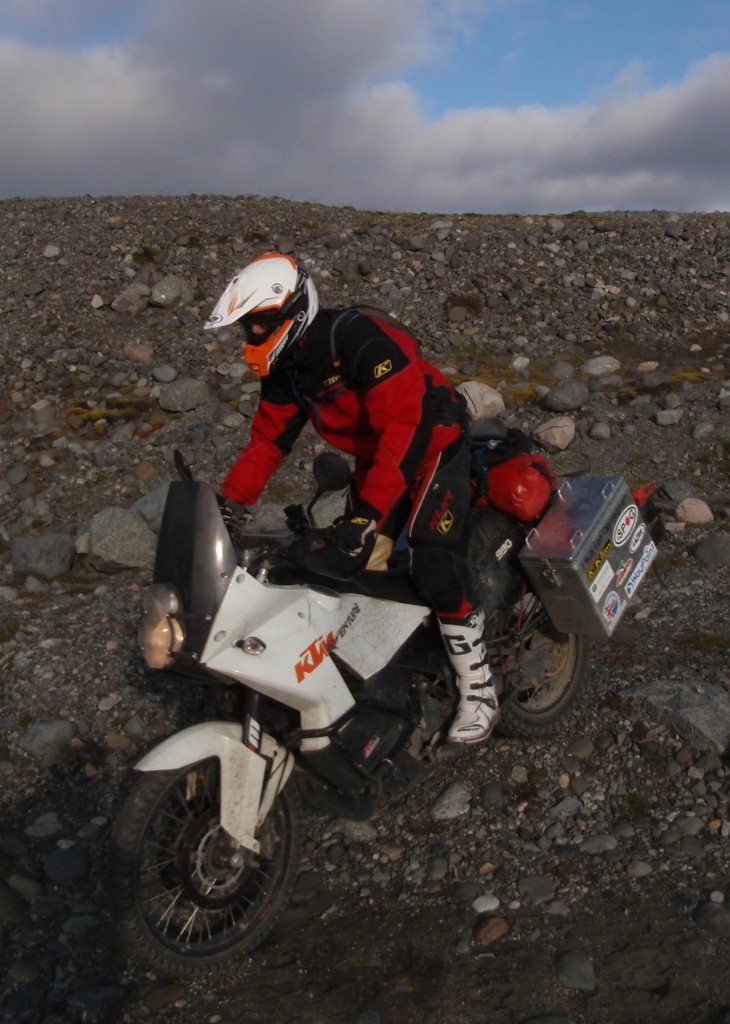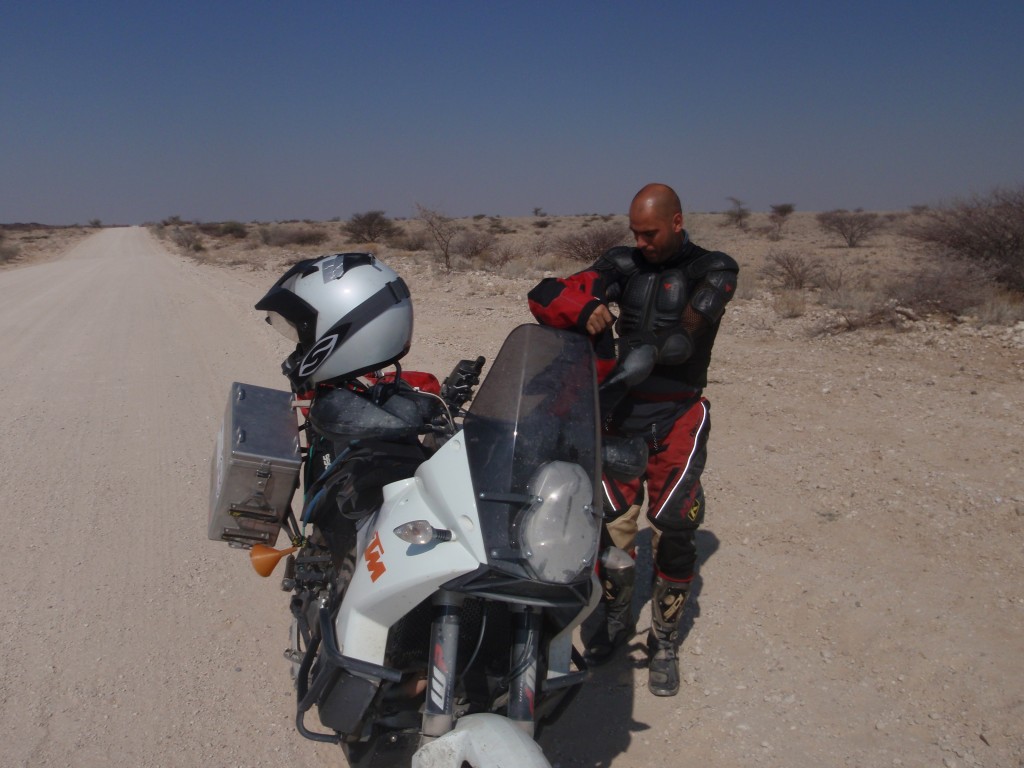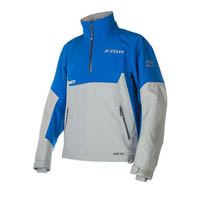Selecting the right adventure jacket for the trip. Finding your way through the various brands and collections. It can be hard sometimes as your gear can make the difference between a fun ride and utter suffering, between a mere dent in your self-esteem and a trip to the hospital, between sweating your arse off or enjoying a cool breeze with the sun in your face. To put it plain and simple: the selection of your riding gear has the potential to make or break your trip.
The many years of riding experience have helped us getting a pretty good idea of what to consider when shopping around. So before you decide to get that super cool looking riding outfit, promising you an excellent ride in all conditions and all of that at an amazingly low price, maybe first run through our checklist of things we think are definitely worth considering.
1. Weather resistance and breathability
Unfortunately, even the driest and sunniest of places have their sporadic downpour every now and then. Sometimes we need to ride through a stretch where the risk of rainfall is pretty high and for some regions a rainy climate even adds to the beauty of the environment so we wouldn’t want to miss out on that. Many brands have their own specific waterproof membrane that will guarantee, so it says on the tin, a 100% dry ride. All of them will promise you excellent breathability. Allow me to be a bit sceptic.
Gore-Tex was the first breathable waterproof membrane on the market and has evolved a lot since its introduction. From our experience, their performance is still hard to beat. Other membranes either leave wet spots after a decent shower but most of them probably just turn your jacket into a steambag that would make every codfish fillet jealous. We know because we have tried quite a few. As far as I am concerned, the balance between water resistance and breathability offered by Gore-Tex is still unrivalled.

Avoid restrictive clothing when doing off-road
2. Ability to move
Especially when doing some serious off-road, the ability to move freely is crucial. A jacket too tight may make you look just that little bit thinner, you will for sure regret it when the going gets tough and it restricts your movement or you risk tearing it apart. On the other hand, a jacket too loose will flap around or just sit in the way. I tend to follow these rules of thumb: when in doubt of the size, take the bigger one. Wearing a body armour underneath? Take one size up.
3. Reliability and longevity
That water proof membrane is one of the most delicate elements of your outfit. Continuous abrasion of your jacket, sometimes in dusty environments, tends to quickly wear out the fragile membrane. A good crash will undoubtly hole the protective textiles allowing for water ingress. Our experience however is that separate Gore-Tex liners wear out far more quickly than those attached to an outer shell. In the latter case, the shell kind of protects the inner membrane. It can be the difference between swapping your liner every 3 or so months, or finding the waterproofness seems to last forever. And for sure a separate liner means you don’t have to buy a whole new jacket, but when you see the price of a separate Gore-Tex insert, one will want to rethink the options of buying a new jacket altogether.
4. Ventilation
This too can be of importance to some, especially those looking for an all-in-one combo with incorporated crash protection . Being able to open ventilation zippers or having mesh areas in your jacket can be a true relief when riding in hot areas while not wanting to compromise crash protection.
But instead of opening up a whole bunch of zippers, we tend to just take off our jacket and rely on our separate protective body armour. You will have a hard time finding a better ventilation on your ride! Now one could think ventilation becomes irrelevant in that case. Well… not entirely. Because in tropical regions, rain often goes together with sultriness and while you want your outer shell to protect you from the rain, well positioned vent zippers, preventing most of the water ingress, most definitely increase your riding comfort.
No matter what kind of ventilation you choose, make sure to go for high quality zippers that are waterproof where you want them to be and bear in mind that every waterproof liner will add some thermal insulation to your gear which means additional transpiration in hot weather. Also good to know is that for temperatures above 46°C, ventilation tends to have the opposite effect: it kind of slowly cooks you like a fan assisted oven instead of cooling you down.
5. Weight and packing size
Now taking your jacket off on hotter days is one thing, but what to do with your jacket when you are not using it? Space in your panniers or on your bike tends to be very limited and that calls for a jacket as compact and light as possible. That is one of the reasons we like to keep layers separated. A protective waterproof outer shell that stows away easily, a separate mesh body armour for crash protection and as many thermal layers as you can throw a stick at to protect you from the cold if required. Remember that combining all those features in one jacket will limit your flexibility somewhat which can be especially annoying when facing high variations in weather conditions along your trip. And with variations I mean from freezing cold to 50°C blistering heat with typically a few good old downpours in between. If the weather on your trip is a bit more stable and predictable, the convenience of having just one all-in-one combo, is probably what you are after. I would say for temperatures below 35°C, an all in one combo will probably be the best bet.

A quick stop to take off my jacket when temperatures get too hot
6. Crash protection
We want our gear to stand out in protecting as much as possible in the event of a crash. Always pay attention to the level of protection of your entire kit, that is the combination of layers or the full combo. Use good quality certified protection and be as complete as possible: arms and elbows, shoulders, collar bones, chest and back. You can add a neck protector to that if you like but pay attention that your jacket is compatible with it.
Incorporated crash protectors often are less of a hassle for an all-in-one combo as the protectors are designed and developed to suit your gear the best. It is kind of a no-worry approach that offers the best overall protection at the lowest weight without the need for straps or webbing to keep it all in place. The jacket will do that for you.
7. Looks
This might not be the most important criterion of all, but especially when travelling with a woman, the fact that you are wearing riding gear most often will make her want to look good in her outfit as well. It seems a genetic thing and I learned to live with it. And to be honest I too prefer a good looking female rider next to me rather than a shapeless bag of potatoes. And for the guys: looking good never harmed anyone.
Our selection: KLIM PowerXross Pullover
The final choice of your gear mainly depends on the trip you are going to make. As on our trips the weather conditions vary a lot both for precipitation and temperature, we opted for the highest possible flexibility. That means separate layers, allowing us to ride without a jacket on those extremely hot days. We chose for the KLIM PowerXross Gore-Tex outer shell combined with a mesh body armour jacket and thermal layers to keep you warm.
The design of the jacket is pretty straightforward and that is exactly what we like about it. It has long waterproof zippers on the sides that double as ventilation if required. Closing or opening the side zipper takes a little getting used to, but it works great. Its waterproof because of the Gore-Tex liner attached to the outer shell which also makes this jacket will last. When I say waterproof I mean: not a single drop will get through! Large side pockets allow you to stow some extra stuff you need to have direct access to. Sleeves have a quality velcro strap to keep the cold and the rain out, and there is a short zipper at the neck. For a riding jacket, it packs down surprisingly compact. The PowerXross is not compatible with a neck brace but we don’t use one those so for us that wasn’t much of an issue.
Bear in mind that this jacket comes without any thermal insulation nor crash protection, but that keeps the price fairly low and allows for the PowerXross jacket to double as a simple rain jacket when we’re not riding, without the need of carrying all your protective armour on a simple hike.
Stay tuned for our upcoming in depth from the field review of the KLIM PowerXross Pullover.

KLIM PowerXross Pullover

